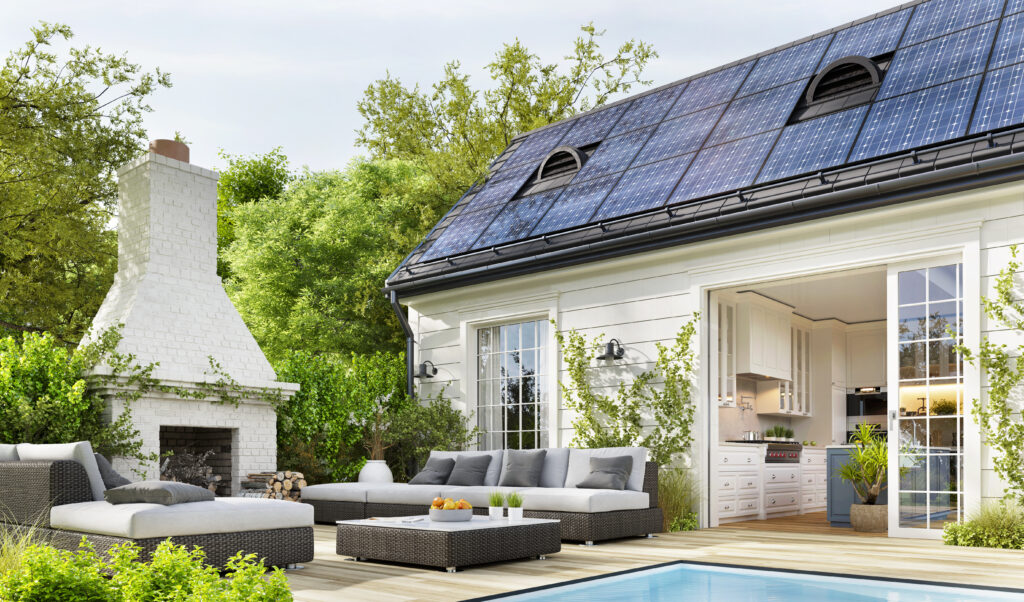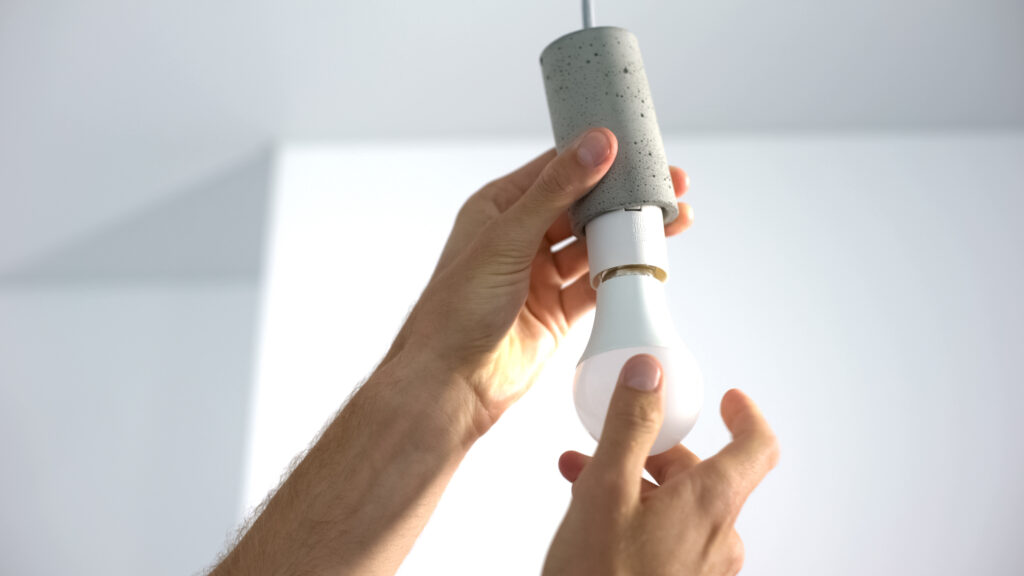Today, creating an energy-efficient home is already the norm. The best aspect of the concept is that it allows homeowners to maximize overall energy efficiency and minimize the need for cooling and heating by utilizing the design of their home to their advantage.
If you’re planning a substantial renovation or just making modest changes, here are some energy-efficient design recommendations to get you started.
1. Make The Switch To Solar Energy
Installing renewable energy systems that harness energy from nature, such as solar power, is worth considering to make your home energy-efficient. Most have low operating costs and have the potential to reduce or even eliminate your monthly electricity bills.
Solar panels can provide one of the most cost-effective forms of renewable energy for your home, especially if you have unobstructed access to the sun most of the day and throughout the year. It’s also an environmentally friendly option since solar energy is converted into electrical energy, minimizing the greenhouse gas emissions that negatively harm the environment.
A solar panel system can power all the energy needs of a house, including appliances, lighting, and even heating and cooling systems. If you’re thinking about switching to a solar panel system to cut down on your monthly utility bills and keep your home more energy-efficient, you might want to check out these helpful resources to get a good start.
2. Arrange The Furniture To Allow Proper Circulation
If your home’s interior feels cramped, it might be time for a rearrangement. It’s best to move furniture so that no air vents are blocked or obstructed.
Remember that the vents should be fully exposed to allow the air to circulate adequately around your home. If you place dense furniture against the exterior walls, such as a high-back sofa or a bookcase, it can act as a thermal barrier.
3. Refresh The Look Of Your Home With A New Coat Of Paint
Aside from upgrading the light bulbs, the color of your walls can help contribute to making your home energy efficient.
Light paint colors can reflect more light, thus making a room brighter than dark colors. Apart from lighting up your home, the light paint colors can keep it cool as well.
4. Upgrade The Lighting Fixtures
There’s an interior and exterior lighting system in every house that can consume a significant amount of energy depending on the lighting fixtures or bulbs.
When the light fixtures in your home consume the bulk of your electricity consumption, consider switching to fluorescent or light-emitting diode (LED) bulbs since they produce less heat and better light, ultimately saving energy in the long run. Generally, LEDs can provide you with a good return on investment and are compatible with most light fittings.
Aside from switching to LEDs, the windows can also help make your home energy efficient. If your budget allows, the windows can be designed to let natural light in, reducing the need for artificial lighting during the day.
5. Integrate Energy-Saving Devices
As advancements and innovations in technology become readily available, the selection of smart devices can help make your home energy-efficient. These devices are worthwhile investments because they use less energy than standard appliances, thus lowering your monthly utility bills.
A good start would be smart air conditioner (AC) controllers, smart bulbs, and smart thermostats, to name a few. The smart AC controllers work by regulating the air conditioning usage depending on your consumption habits throughout the day, hence drastically lowering your cooling and heating bills.
6. Switch To An Energy-Efficient Roofing Material
Think about the roofing material to make your home more energy-efficient and save money on your monthly utility bills.
Depending on the material you choose, it can absorb less heat by deflecting the sun’s rays, thereby maintaining a constant temperature in your home.
A dark, non-reflective roofing material absorbs heat and eventually transfers into your attic and your home. As the excess heat moves into your home, your air conditioning unit will strain to maintain the right temperature.
Lighter-colored roofs reflect heat better than dark-colored roofs, and certain coatings can improve reflective quality. Among the different types of roofing material, consider metal, asphalt shingles, and tile as suitable options.
7. Install A Ceiling Fan In High-Traffic Rooms
A simple way to make your home energy-efficient is to install a ceiling fan. Once you’ve installed a ceiling fan, you can set the thermostat to around four degrees while staying comfortable with the heater or air conditioner.
During summer, turn on the ceiling fan in a counter-clockwise direction or reverse at high speed to produce a soft breeze of warm air that moves upwards. During the winter, run it at a low speed in the opposite or clockwise direction to drive the warmer air trapped near the ceiling down to the living area.
Remember that the ceiling fan can maintain a comfortable environment, but turn it off if you’re not around, to prevent electricity wastage.
Final Thoughts
Once you decide to switch to an energy-efficient home, the main objective is to reduce energy consumption significantly. By considering these design pointers in your upcoming renovation project, you can improve the overall energy efficiency of your home.


